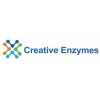Cat No.
NATE-0053
Description
Alkaline phosphatase (ALP, ALKP, ALPase, Alk Phos) (EC 3.1.3.1) is a hydrolase enzyme responsible for removing phosphate groups from many types of molecules, including nucleotides, proteins, and alkaloids. The process of removing the phosphate group is called dephosphorylation. As the name suggests, alkaline phosphatases are most effective in an alkaline environment. It is sometimes used synonymously as basic phosphatase.
Abbr
ALP, Native (Bovine)
Alias
ALP; ALKP
Source
Bovine intestinal mucosa
Species
Bovine
Form
Type I, lyophilized powder; Type II, aqueous solution, solution in 3.2 M ammonium sulfate, 1 mM MgCl2 and 0.1 mM ZnCl2, pH 7.0; Type III, buffered aqueous solution, Solution in 3.0 M NaCl containing 5 mM MgCl2, 0.2 mM ZnCl2, and 30 mM triethanolamine, pH 7.6; Type IV, Type V, Type VI, buffered aqueous glycerol solution, Solution in 50% glycerol containing 5 mM Tris, 5 mM MgCl2 and 0.1 mM ZnCl2, pH 7.0.
Enzyme Commission Number
EC 3.1.3.1
Bio-activity
Type I, > 10 DEA units/mg solid; Type II, > 2 ,000 DEA units/mg protein; Type III, 2 ,000-4 ,000 DEA units/mg protein; Type IV, > 5,500 DEA units/mg protein; Type V, > 6,500 DEA units/mg protein; Type VI, > 4 ,000 DEA units/mg protein.
CAS No.
9001-78-9
Molecular Mass
dimer mol wt ~160 kDa
Unit Definition
One DEA unit will hydrolyze 1 μmole of 4-nitrophenyl phosphate per minute at pH 9.8 at 37°C. (One glycine unit is equivalent to ~3 DEA units)
Applications
Alkaline phosphatase can be used to dephosphorylate casein and other proteins. Alkaline phosphatase may be also be used to dephosphorylate the 5′-termini of DNA or RNA to prevent self-ligation. DNA or RNA can also be tagged with radiolabeled phosphate (via T4 polynucleotide kinase) after dephosphorylation with alkaline phosphatase. Alkaline phosphatase is used for conjugation to antibodies and other proteins for ELISA, Western blotting, and hist ochemical detection. It is routinely used to dephosphorylate proteins and nucleic acids. It may be used for protein labeling when high sensitivity is required. Alkaline phosphatase may be also be used to dephosphorylate the 5′-termini of DNA or RNA to prevent self-ligation. DNA or RNA can also be tagged with radiolabeled phosphate (via T4 polynucleotide kinase) after dephosphorylation with alkaline phosphatase. This product has been used to study the mon oclonal alkaline phosphatase-anti-alkaline phosphatase (APAAP) complex. High specific activity grade recommended for antibody and protein conjugation.
Warnings
Package sizes are based on DEA units
Gene Name
ALPL
Synonyms
Alkaline phosphatase; ALP; ALKP; ALPase; Alk Phos; EC 3.1.3.1; Alkaline phosphomonoesterase; Glycerophosphatase; Phosphomonoesterase
GeneID
280994
mRNA Refseq
NM_176858.2
Protein Refseq
NP_789828.2
UniProt ID
P09487
Chromosome Location
2
Pathway
Endochondral Ossification, organism-specific biosystem (from WikiPathways) Folate biosynthesis, organism-specific biosystem (from KEGG) Folate biosynthesis, conserved biosystem (from KEGG) Metabolic pathways, organism-specific biosystem (from KEGG) TNF-alpha NF-kB Signaling Pathway, organism-specific biosystem (from WikiPathways)
Function
The peri-partum characteristics of serum bone-specific alkaline phosphatase (BAP) and urinary deoxypyridinoline (DPD) in dairy cattle are reported. Results indicate that the presence of glycosylphosphatidylinositol increases the stability of alkaline phosphatase against chemical denaturation while it decreases its refolding yield by the artificial chaperone refolding technique. Reliable and reproducible estimates of k (cat) and K (m) from only two or three progress curves were obtained using alkaline phosphatase. GPI-anchored proteins are localized on the outer layer of plasma membranes and clustered in microdomains generally called lipid rafts.





